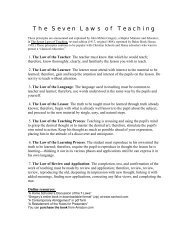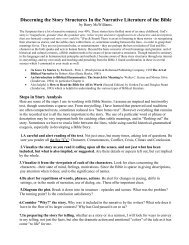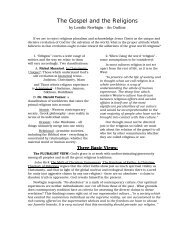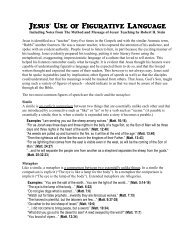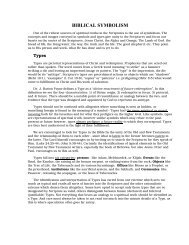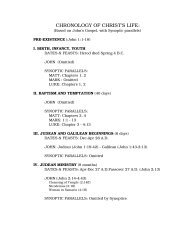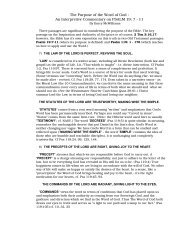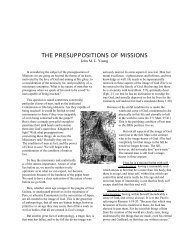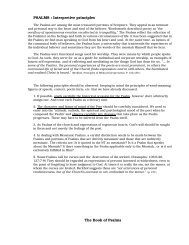Carcassonne
Carcassonne
Carcassonne
Create successful ePaper yourself
Turn your PDF publications into a flip-book with our unique Google optimized e-Paper software.
The Farm Questions<br />
There are three different rules for farmer scoring in the editions of the game. The situation is complicated by the<br />
fact that Rio Grande decided to stick with the first set and didn't make uses of any of the changes. The various rules<br />
are:<br />
German 1st Ed and Rio Grande:<br />
1) Look at each city<br />
2) total up all the farmers for each<br />
player in all the fields adjacent to that<br />
city.<br />
3) the player(s) with the most farmers<br />
scores 4 points for that city.<br />
German 2nd Ed:<br />
1) look at each city<br />
2) if a player has the most farmers in<br />
any one of the fields adjacent to the<br />
city he scores 3 points.<br />
German 3rd Ed:<br />
1) look at each field<br />
2) the player(s) with the most<br />
farmers in that field<br />
scores 3 points for each city<br />
adjacent to that field.<br />
In both the second and third version of the rules it helps to remove losing farmers from each field before scoring.<br />
You cannot do that with the first version. The pig rule is simple and applies to all versions: if you have the most<br />
farmers in the field where your pig is, then any city that scores for you with help from that field scores an extra 1<br />
point. There has also been a change to the rule about 2 tile cities: in the German 3rd edition two tile cities score 4<br />
points upon completion instead of 2 points as in all the earlier editions.<br />
Completing Farms before the end of the game: “Pigging Out” (J McWeaselly) - (keep in mind you<br />
must play with 3rd edition German rules, with Rio Grande rules this doesn't work): A farm is said to be completed<br />
when it can never grow because there are non-field features on all sides of all tiles participating in the farm. If a<br />
player has a pig in a farm when it is completed, s/he may elect to pig out. When pigging out, a player scores her<br />
points for the farm (if any), then picks up all her followers in the farm and returns them to supply. The bonus point<br />
for the pig is scored - one per city. If multiple players might pig out, they decide in clockwise order, starting with the<br />
player who placed the final tile in the farm. So would we want to score a farm early? Are all the bordering cities<br />
complete – if not, perhaps it would be better to wait. But then, are too many of the player’s followers currently tied<br />
up as farmers.<br />
Scoring Completed Farms during Play -- a couple more ideas to this variation. (Micheal Brna)<br />
1) As soon as a farm completes, it MUST be scored.<br />
2) A farm is not complete until (a) it cannot grow (as above) and<br />
(b) it has no holes in it (ie similar to a city, a farm must have a completed boundary border<br />
AND it must be complete within those borders (no holes)).<br />
One implication of this is that if a completed farm touches an incomplete city, the player must pig-out and s/he does<br />
not score points for the incomplete city the farm borders (the player cannot wait until the city finishes to pig-out). I<br />
suppose another implication is that only completed farms score during the game, while any farm (complete or not)<br />
scores at the end.<br />
A Count of <strong>Carcassonne</strong> Variant (Kevin Prickett): Playing followers from the city of <strong>Carcassonne</strong><br />
All followers start in <strong>Carcassonne</strong>. The count starts in the market quarter. Then each player must place at least one<br />
follower in each quarter. The remaining followers may be distributed as desired between the quarters. The builder<br />
and the pig are not placed in <strong>Carcassonne</strong>, and are played as usual. When a tile is placed, the player may place a<br />
follower on the tile only if they have a follower in the correct quarter of <strong>Carcassonne</strong>, and the Count is not currently<br />
in that quarter. If the player does not place a follower, the next player (to the left) may place a follower, if he has a<br />
follower in the correct quarter, this option continues moving to the left until a follower has been placed or all players<br />
have passed. (normal placement restrictions apply) W hen a feature is completed the follower is returned to<br />
<strong>Carcassonne</strong> in the quarter of the player’s choice. When a player completes a feature the count moves. A (4) sided<br />
die is rolled to determine his location: (1) - Castle; (2) - Blacksmith; (3) – Cathedral (4) - Market.<br />
This variation could be used instead of the official Count of <strong>Carcassonne</strong> rules which allow other players to play<br />
followers out of <strong>Carcassonne</strong> when features are scored to grab points, and might be a nice variation for two player<br />
games. It is also suggested that presence of the Count might not deter a follower from being played out with the<br />
play of a magic portal tile from the Princess and Dragon expansion.<br />
The Dragon (Random Moves) (Kevin Prickett)<br />
When a dragon tile is placed, a four (4) sided die is rolled for movement, by player placing the dragon tile, (8) rolls.<br />
Number rolled indicates direction (1)-North; (2)-East; (3)-West; (4)-South. The dragon may “visit” the same<br />
tile only twice on his 8 move journey. The dragon will not travel to the tile with the fairy. (If the die indicates an<br />
“illegal” move the dragon does not move, but it counts as one of his (8) moves) Whenever the dragon visits a tile<br />
with a follower, the player whose follower stands on the tile, takes the follower from the tile, and returns it to<br />
<strong>Carcassonne</strong>. After the dragon completes his journey, the game resumes.




